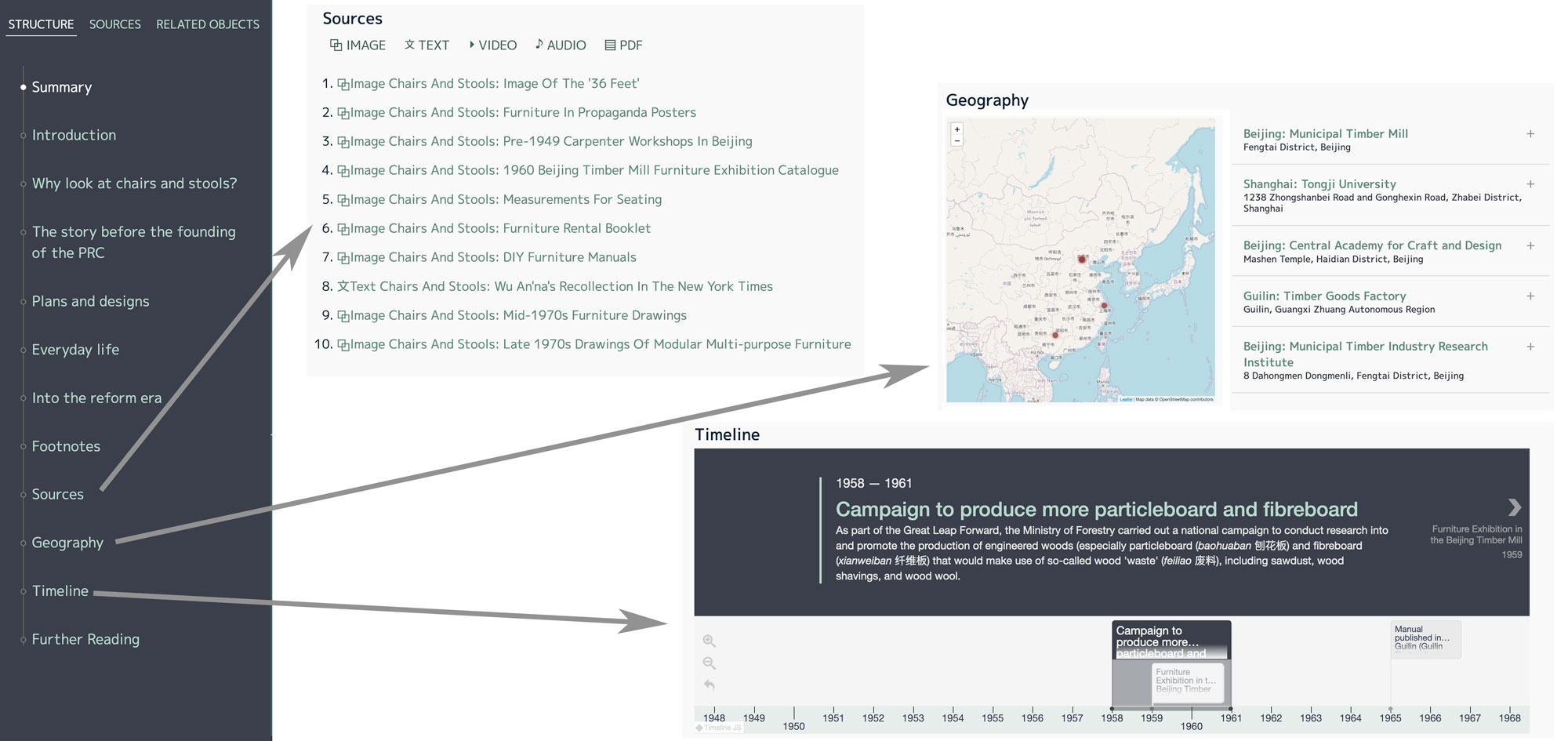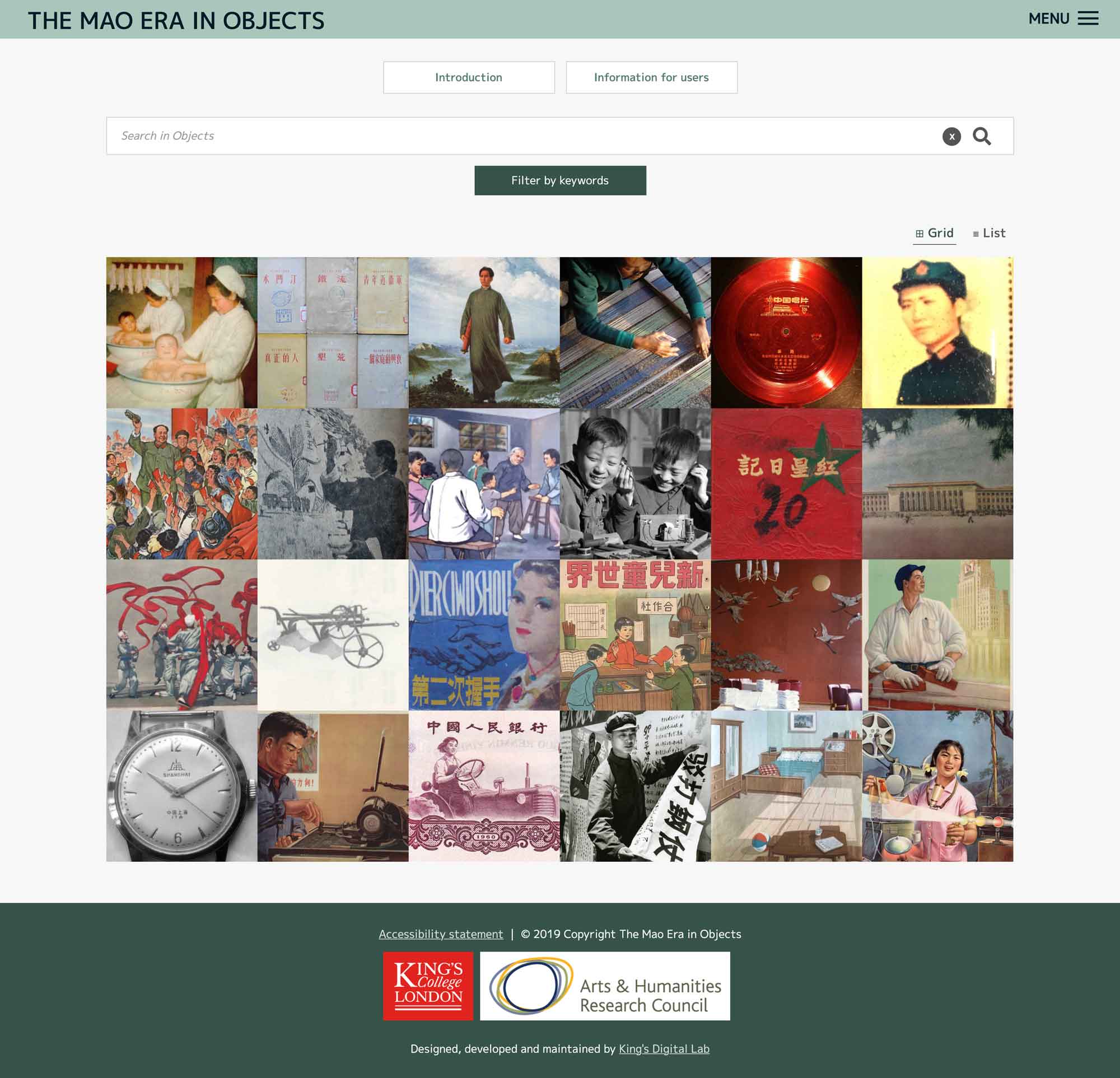Insights and Collaboration
Under the guidance of Dr. Jennifer Altehenger, the project was spearheaded by the research software engineering team at King's Digital Lab. Collaborating closely with developers, an analyst, and project assistants, the team navigated the intricacies of designing and implementing a dynamic and informative website.
The website delves into twenty-four distinct objects emblematic of the Mao Era, shedding light on their significance, symbolism, and societal impact. Ranging from everyday artifacts to iconic symbols, each object offers a window into the complex tapestry of life during this transformative period. Contributors offer diverse perspectives, examining objects from various angles including their creation, representation, circulation, and utilization, resulting in a rich tapestry of interpretations reflecting individual expertise and research interests.
Gathering Insights
To kickstart the design process, extensive user research was conducted, focusing on understanding the needs, preferences, and expectations of the target audience. This involved actively participating in workshops, with special emphasis on engaging with teachers, a primary user group for the website. Through these workshops, valuable insights were gleaned regarding user requirements, content preferences, and desired functionalities. By actively involving users in the research phase, the design team gained a deeper understanding of the challenges and opportunities inherent in crafting an effective and engaging website.

Iterative Design Exploration
Armed with insights gathered from user research, the design team proceeded to develop prototypes of key elements of the website, including the landing page and object pages. These prototypes served as tangible representations of the proposed design concepts, allowing for early validation and feedback gathering. Meticulous attention was paid to ensure that the prototypes were not only visually appealing but also responsive and intuitive to navigate. Through iterative design exploration, the team refined the prototypes based on user feedback, focusing on optimizing usability and enhancing the overall user experience.

Collaborative Development
Collaboration between designer and developer played a pivotal role in translating design concepts into functional elements. Design specifications were accurately implemented and seamlessly integrated into the website's architecture. The iterative nature of development on the staging server allowed for continuous feedback loops, enabling the team to address any design-related challenges or technical constraints promptly. By fostering a collaborative environment, the team was able to leverage the strengths of both design and development disciplines, resulting in a cohesive and polished end product.

Usability Testing
Usability testing served as a critical checkpoint in the design process, allowing the team to evaluate the effectiveness of design solutions and identify areas for improvement. Through rigorous testing, the team assessed the usability of the website across different devices and user scenarios, ensuring that users could interact with the website effortlessly. Feedback gathered from usability testing informed further refinements, ensuring that the final design met the project objectives and aligned with user expectations.

Finalisation and Launch
In the final stages of the design process, the focus shifted towards fine-tuning and polishing the design elements in preparation for launch. This involved addressing any remaining design inconsistencies, optimizing performance, and conducting a comprehensive review to ensure that the website met quality standards. With the design finalized and thoroughly evaluated, the website was successfully launched, poised to provide users with a seamless and immersive experience.

Conclusion
The Mao Era Objects project stands as a testament to the power of digital platforms in unraveling historical narratives and cultural significance. By offering a nuanced exploration of everyday artifacts and iconic symbols, the website invites visitors to journey through the material culture of Maoist China, fostering a deeper understanding of this pivotal period in history.
